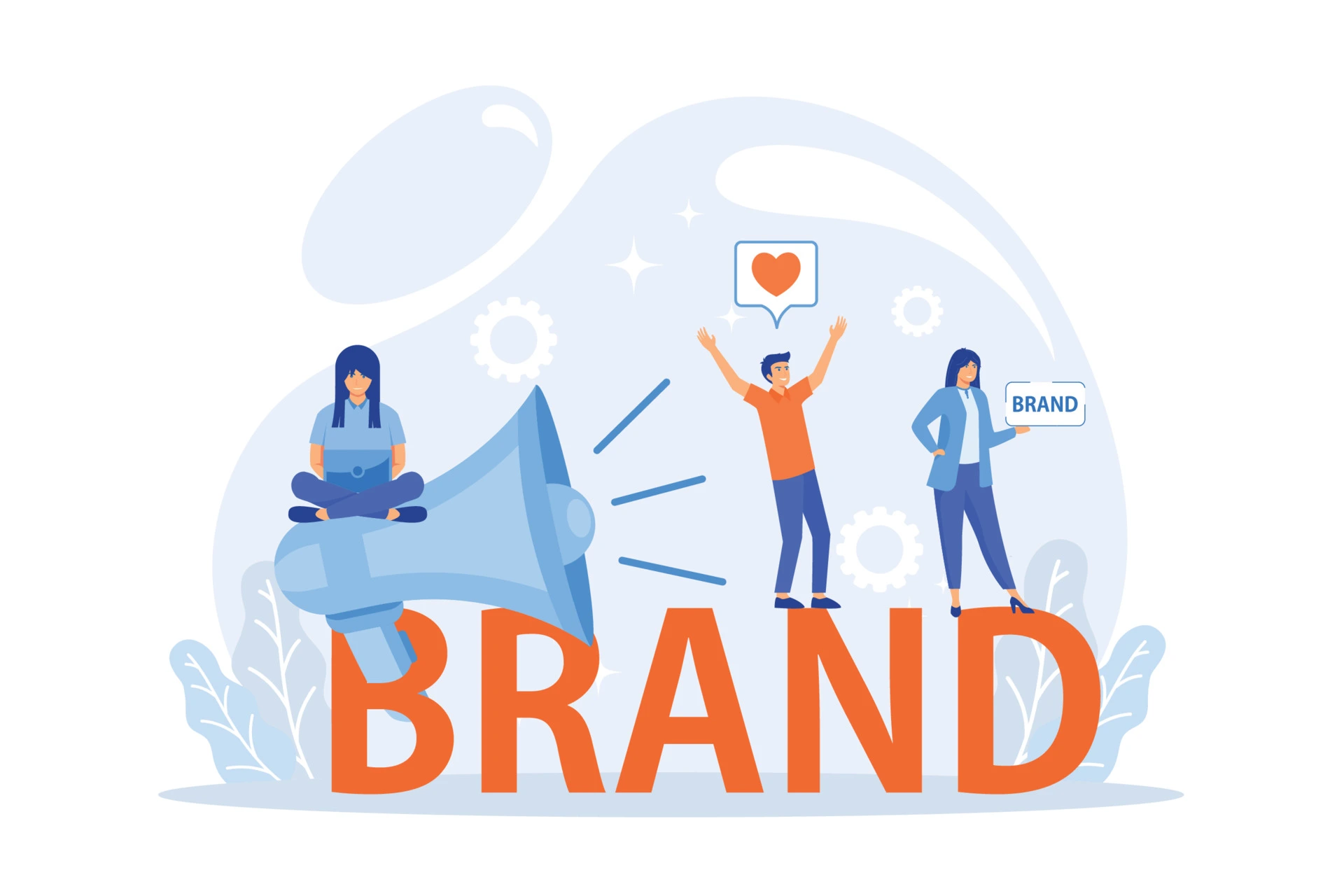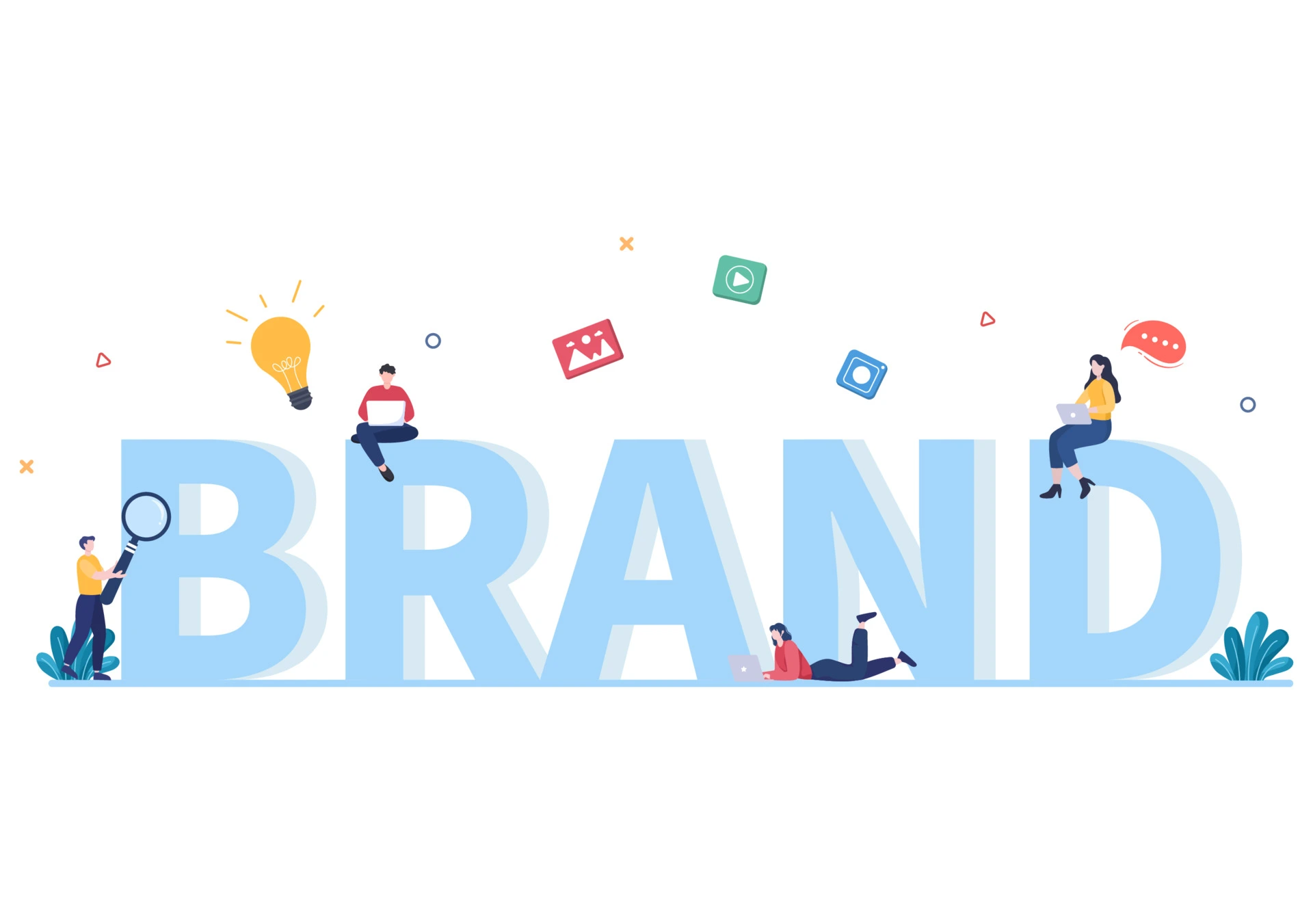Brand awareness refers to how well consumers recognize and recall a brand. It measures the extent to which a brand is known within its target audience. High brand awareness indicates that a brand has successfully embedded itself in consumers’ minds, often leading to greater customer loyalty and trust.
Brand awareness encompasses various elements, including brand recognition and brand recall. Brand recognition is when consumers can identify a brand by its logo, packaging, or advertising. In contrast, brand recall occurs when consumers can spontaneously remember a brand without any cues. Building strong brand awareness is crucial for brands like HT City Unwind, as it establishes a foundation for consumer engagement.
Mechanisms Behind Brand Recognition
Understanding how consumers recognize brands is essential for developing effective marketing strategies. Brand recognition is the ability of consumers to identify a brand by its attributes, such as logos, slogans, or colors. This recognition is influenced by various factors.
How Consumers Recognize Brands
- Visual Elements: Logos, packaging, and colors play a crucial role in brand recognition. Consumers often associate specific visual elements with a brand, making it easier to recall.
- Repetition: Frequent exposure to a brand through advertisements and promotions reinforces recognition. The more frequently consumers encounter a brand, the more likely they are to remember it.
- Contextual Cues: Brands can also be recognized through contextual cues. For example, a brand associated with a particular lifestyle or setting can evoke recognition when encountered in similar contexts.
- Social Influence: Recommendations and reviews from friends, family, or influencers can enhance brand recognition. Consumers often trust familiar voices, increasing their likelihood of recognizing and recalling the brand.
The Psychology of Brand Recall
The psychology behind brand recall involves cognitive processes that allow consumers to retrieve a brand from memory. Understanding these processes can help brands strengthen their positioning.
- Associative Networks: Brands create associative networks in consumers’ minds. When one element (like a logo) is triggered, related information (such as the brand’s values or products) becomes accessible, aiding recall.
- Emotional Connections: Emotional branding can enhance recall. Brands that resonate emotionally with consumers are more likely to be remembered, as emotions are powerful triggers for memory.
- Familiarity Effect: The mere exposure effect suggests that repeated exposure to a brand increases familiarity, making it easier for consumers to recall it later. This is why consistent branding is crucial for recognition.
- Priming: Priming involves exposure to a stimulus that influences a response to a subsequent stimulus. For instance, seeing an advertisement may prime consumers to recall the brand during their shopping experience.
By leveraging these mechanisms, brands can enhance their recognition and recall, creating a lasting impact in consumers’ minds.
Factors Influencing Brand Awareness
Brand awareness is shaped by various factors that can either enhance or hinder a brand’s visibility in the market. Understanding these elements is crucial for effective marketing strategies.
Key Elements That Enhance or Hinder Brand Visibility
- Consistency in Branding: Consistent branding across all platforms such as logos, colors, and messaging strengthens brand recognition. Inconsistency can confuse consumers and diminish brand awareness.
- Advertising and Promotions: Effective advertising campaigns increase brand visibility. Promotional strategies, such as discounts and limited-time offers, can also attract attention and enhance awareness.
- Social Media Presence: Active engagement on social media platforms allows brands to reach a wider audience. Regular posts, interactive content, and customer engagement contribute significantly to brand visibility.
- Content Marketing: High-quality, valuable content can boost brand awareness by providing consumers with useful information. Blogs, videos, and infographics can enhance recognition and establish authority in the industry.
- Public Relations: Positive media coverage and press releases can significantly enhance brand visibility. Strategic PR efforts can create buzz and attract attention to a brand.
- Word of Mouth: Recommendations from satisfied customers can enhance brand visibility. Positive experiences shared through word-of-mouth can be powerful in driving brand awareness.
- Competitor Activity: The actions of competitors can influence brand visibility. If competitors have strong brand recognition, it may overshadow lesser-known brands, making it essential to differentiate.
The Role of Market Research and Consumer Behaviour
- Understanding Target Audience: Market research helps brands identify their target audience’s preferences, behaviors, and needs. This understanding allows for tailored marketing strategies that resonate with consumers.
- Consumer Insights: Analyzing consumer behavior provides valuable insights into how consumers perceive a brand. Understanding their motivations and pain points can help brands craft effective messages that enhance awareness.
- Testing Strategies: Market research allows brands to test different strategies and measure their effectiveness. This iterative process helps identify what works best for enhancing brand visibility.
- Feedback Mechanisms: Gathering consumer feedback through surveys and focus groups can reveal perceptions of brand awareness. Brands can leverage this feedback to fine-tune their strategies and enhance visibility.
By recognizing these factors, brands can strategically enhance their awareness in the marketplace, ultimately leading to greater consumer engagement and loyalty.
Innovative Strategies for Boosting Brand Awareness
To effectively boost brand awareness, businesses need to adopt innovative strategies that resonate with their target audience. Unique approaches can set a brand apart in a crowded marketplace.
- Experiential Marketing: Create immersive experiences that engage consumers directly with the brand. Events, pop-up shops, or interactive installations allow potential customers to experience the brand firsthand, fostering deeper connections.
- Gamification: Incorporating game-like elements into marketing strategies can capture attention and encourage participation. Contests, quizzes, or loyalty programs that reward engagement can boost brand visibility and consumer interaction.
- Storytelling: Craft compelling narratives around the brand. Sharing authentic stories about the brand’s origin, values, or customer experiences can create emotional connections and enhance recall.
- Sustainability Initiatives: Brands that prioritize sustainability can attract environmentally conscious consumers. Initiatives like eco-friendly packaging or charitable contributions can enhance brand image and awareness.
- User-Generated Content: Encourage customers to create content related to the brand. This can include reviews, testimonials, or social media posts. User-generated content not only fosters community engagement but also acts as a genuine endorsement.
The Significance of Brand Awareness in Business Growth
Brand awareness is essential to a successful business strategy. It drives growth and helps build long-term customer relationships. This can help with:
- Increased Consumer Trust: High brand awareness often correlates with greater consumer trust. When customers recognize and are familiar with a brand, they are more inclined to make purchases, which boosts sales.
- Higher Conversion Rates: Consumers are more inclined to buy from brands they know. Strong brand awareness can enhance conversion rates, as potential customers feel more comfortable making a purchase from a familiar name.
- Competitive Advantage: Brands with higher visibility often enjoy a competitive edge. Recognizable brands can dominate market share, making it harder for lesser-known competitors to attract customers.
- Repeat Business: Established brand awareness fosters customer loyalty, leading to repeat purchases. Loyal customers contribute significantly to a brand’s revenue, as they are more likely to return for future purchases.
- Influence on Pricing: Brands with strong awareness can often command higher prices. Consumers are willing to pay a premium for trusted brands, positively impacting profit margins.
Long-Term Benefits of Strong Brand Recognition
- Sustained Market Presence: Strong brand recognition contributes to a consistent market presence. This stability can be essential during economic fluctuations, as loyal customers will continue to support the brand.
- Resilience Against Competitors: Brands with solid recognition are more resilient against competitive pressures. Established customers are less likely to switch to new entrants, providing a buffer against market changes.
- Enhanced Customer Advocacy: Recognizable brands often benefit from word-of-mouth marketing. Satisfied customers become brand advocates, promoting the brand to their networks and expanding its reach organically.
- Increased Brand Equity: Strong brand recognition builds brand equity, increasing the overall value of the brand. This equity can be leveraged for expansion, partnerships, or even mergers and acquisitions.
- Facilitated New Product Launches: Brands with high awareness can introduce new products more easily. Familiarity breeds acceptance, making consumers more receptive to new offerings from a trusted brand.
Effective Tactics to Enhance Brand Awareness
To boost brand awareness, businesses need to take actionable steps that enhance their market visibility. By implementing strategic initiatives, brands can engage consumers more effectively and establish a lasting presence.
Actionable Steps for Businesses to Increase Visibility
- Develop a Clear Brand Identity: Ensure that your brand identity is consistent across all platforms. This includes logos, color schemes, and messaging. A clear identity helps consumers recognize and remember your brand.
- Leverage Digital Marketing: Invest in strategies like search engine optimization (SEO), content marketing, and paid advertising. Use targeted campaigns to effectively reach your audience, driving traffic to your website and enhancing brand visibility.
- Create Valuable Content: Produce high-quality content that resonates with your audience’s needs and interests. Blogs, videos, infographics, and podcasts can position your brand as an authority, boosting awareness.
- Optimize Social Media Presence: Actively engage on social media platforms where your audience is most active. Consistent posts, interactions, and sharing user-generated content can significantly increase brand visibility.
- Run Targeted Ad Campaigns: Use social media and online platforms to reach specific demographics. Personalized ads help attract potential customers and boost brand visibility.
- Encourage Reviews and Testimonials: Positive customer reviews build credibility and draw in new customers. Motivate happy customers to share their feedback on review sites and social media.
Utilizing Community Engagement and Events
- Host Local Events: Organize events, workshops, or seminars that align with your brand’s values. Engaging with the community in person can foster connections and enhance brand awareness.
- Participate in Trade Shows and Fairs: Attend industry-related trade shows or community fairs. These events provide opportunities to showcase your products, connect with potential customers, and enhance brand visibility.
- Sponsorship and Partnerships: Partner with local organizations, charities, or events that resonate with your brand. Sponsorships can increase visibility and show your brand’s commitment to community engagement. HT Media has been instrumental in boosting awareness for a lot of brands over the years with its focus on events.
- Create a Community-Based Initiative: Launch initiatives that support local causes or promote sustainability. This not only builds goodwill but also enhances brand visibility as consumers rally around meaningful efforts.
- Engage with Local Media: Establish relationships with local newspapers, radio stations, and influencers. Getting featured in local media can significantly boost your brand’s visibility and reach a wider audience.
HT City Unwind: A Powerful Opportunity for Brand Awareness
HT City Unwind is a dynamic event celebrating urban culture and lifestyle. Organized by HT City, it offers brands a lively platform to connect with consumers and enhance brand visibility. The event draws a diverse crowd, including young professionals, families, and lifestyle enthusiasts. Attendees enjoy various activities catering to different interests, fostering community engagement. Live music performances by local artists create a festive vibe, providing brands opportunities for sponsorships and promotional booths. Lifestyle exhibitions highlight fashion, wellness, and home décor, helping brands connect with potential customers. Interactive workshops, from cooking demos to DIY crafts, encourage participation, showcasing brand expertise while building community connections. Entertainment zones feature games, contests, and activities for all ages, making the event engaging and enjoyable. HT City Unwind blends entertainment, networking, and branding, creating memorable experiences that resonate with attendees and leave lasting impressions for businesses.
Why Businesses Should Sponsor HT City Unwind
Sponsoring a high-visibility event like HT City Unwind offers businesses a powerful platform to amplify their brand exposure and enhance market presence. As a sponsor, your brand gains increased visibility through event banners, promotional content, and digital platforms, ensuring exposure to a wide audience before, during, and after the event. HT City Unwind attracts a diverse demographic, including young professionals and families, providing businesses with an opportunity to target specific consumer segments effectively. Sponsorship also allows for direct engagement with attendees through interactive booths, activities, or product sampling, fostering memorable experiences that promote brand recognition and loyalty. Additionally, the event’s high-profile nature draws significant media coverage, potentially placing your brand in news articles, social media posts, and other promotional content. By aligning with HT City Unwind, businesses can leverage the event’s popularity and media attention to build meaningful consumer connections and drive long-term brand growth.
Benefits of Sponsoring Lifestyle-Focused Events
- Alignment with Lifestyle Trends
HT City Unwind emphasizes themes like health, wellness, and entertainment, making it an ideal event for brands seeking relevance among consumers who prioritize these aspects. Associating with such trends enhances brand perception and strengthens its alignment with evolving consumer values. - Building Positive Associations and Community Engagement
Sponsorship fosters positive brand associations by linking your business with enjoyment, well-being, and community involvement. Supporting a local event demonstrates social responsibility, building goodwill and loyalty among attendees who value brands committed to meaningful community engagement.
- Direct Customer Engagement and Networking Opportunities
Sponsors benefit from direct interaction through interactive booths, product sampling, and workshops. These engagements create memorable experiences and foster trust among potential customers. The event also serves as a networking hub, enabling businesses to build connections with influencers, industry leaders, and other brands, opening doors for future collaborations.
Frequently Asked Questions
What is Brand Awareness?
Brand awareness refers to the extent to which consumers recognize and recall a brand and associate it with specific products or services. It measures how familiar your target audience is with your brand’s name, logo, and messaging. Strong brand awareness means that your brand stands out in consumers’ minds and influences their purchasing decisions. It plays a crucial role in building trust, customer loyalty, and market share. Businesses often use advertising campaigns, social media, and sponsorships to boost brand awareness, making it the foundation for long-term growth and brand equity.
Why is Brand Awareness Important?
Brand awareness is vital because it builds consumer trust, loyalty, and familiarity, which directly influences purchasing decisions. A strong brand presence ensures customers think of your brand first when they need a product or service, boosting sales and market share. It provides a competitive advantage, helping brands stand out in crowded markets. High brand awareness fosters customer retention, as people are more likely to buy from brands they recognize and trust. Additionally, it strengthens brand equity, enabling businesses to command higher prices. Over time, increased awareness enhances customer advocacy, leading to organic growth through word-of-mouth recommendations.
How to Increase Brand Awareness?
To increase brand awareness, businesses can employ several strategies. Creating engaging content, such as blogs, videos, or infographics, helps capture consumer interest. Leveraging social media platforms with regular posts, collaborations, and influencer marketing expands reach. Participating in events, sponsorships, or hosting giveaways fosters direct interaction with audiences. Utilizing SEO optimized content for visibility in search results. Encouraging user-generated content and positive customer reviews also builds credibility. Consistency across platforms through logos, color schemes, and messaging strengthens recognition, helping consumers easily identify the brand.
What Are Key Metrics to Measure Brand Awareness?
Brand awareness can be measured through several key metrics. Brand recall and brand recognition assess how easily consumers remember or identify your brand. Impressions and reach track how many people are exposed to your messaging, while social media engagement (likes, shares, and comments) indicates interaction with your audience. Website traffic metrics, particularly direct traffic, reveal how often people search for your brand. Share of voice measures your visibility compared to competitors. Lastly, search volume trends monitor how frequently your brand is being searched online, providing insights into changing awareness over time.
What are the key strategies to boost brand awareness?
Effective strategies include maintaining consistent branding across platforms, leveraging content marketing, and running social media campaigns. Brands can use SEO to increase online visibility and collaborate with influencers to expand reach. Events, sponsorships, and experiential marketing create memorable interactions, while user-generated content and customer testimonials enhance trust. HT City Unwind sponsors benefit from event-based promotion by directly engaging attendees, boosting recognition and loyalty.
Ready to take your brand to the next level? Connect with us today to explore how HT Media can amplify your presence across our diverse portfolio of 25+ brands and properties. Let's turn your brand vision into reality!


















Comment